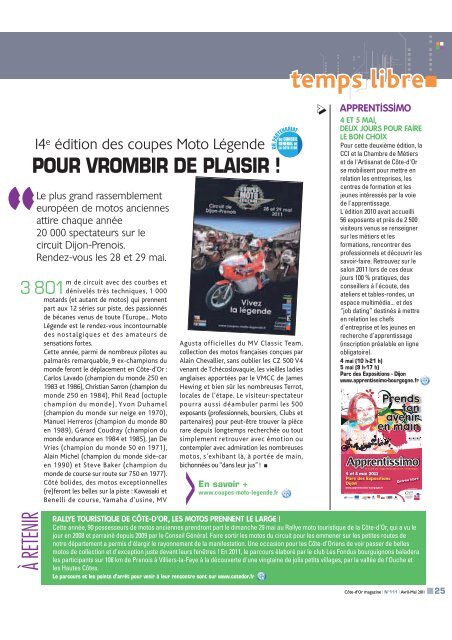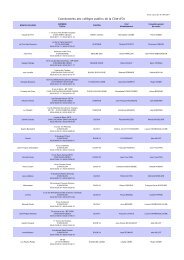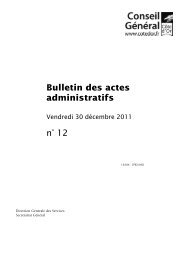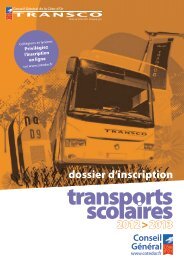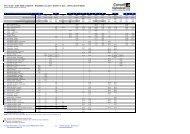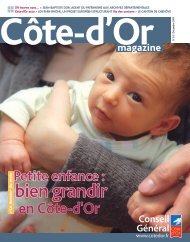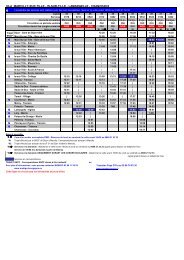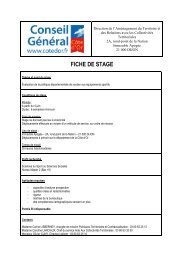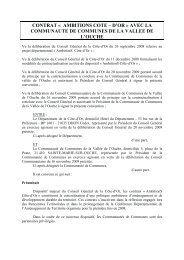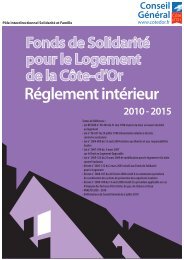Télécharger Côte-d'Or Magazine N°111 - Avril / Mai 2011 en PDF
Télécharger Côte-d'Or Magazine N°111 - Avril / Mai 2011 en PDF
Télécharger Côte-d'Or Magazine N°111 - Avril / Mai 2011 en PDF
You also want an ePaper? Increase the reach of your titles
YUMPU automatically turns print PDFs into web optimized ePapers that Google loves.
Russell Kirk: The Conservative Mindtaxes and those who receive the b<strong>en</strong>efits, th<strong>en</strong> that governm<strong>en</strong>t is a tyranny, no matter howegalitarian in theory. “And so,” Kirk writes, “Calhoun comes to the doctrine of concurr<strong>en</strong>tmajorities, his most important single contribution to political thought.” 44 A truemajority, by Calhoun’s understanding, is not a number of people told by a headcount;instead, it is a balancing and compromising of differ<strong>en</strong>t interests, in which all the importantaspects of the population are repres<strong>en</strong>ted. Kirk quotes Calhoun,There are two differ<strong>en</strong>t modes in which the s<strong>en</strong>se of the community may betak<strong>en</strong>; one, simply by the right of suffrage, unaided; the other, by the rightthrough a proper organism. Each collects the s<strong>en</strong>se of the majority. Butone regards numbers only, and considers the whole community as a unit,having but one common interest throughout; and collects the s<strong>en</strong>se of thegreater number of the whole, as that of the community. The other, on thecontrary, regards interests as well as numbers—considering the communityas made up of differ<strong>en</strong>t and conflicting interests, as far as the action ofthe governm<strong>en</strong>t is concerned; and takes the s<strong>en</strong>se of each, through itsmajority or appropriate organ, and the united s<strong>en</strong>se of all, as the s<strong>en</strong>se ofthe <strong>en</strong>tire community. The former of these I shall call the numerical, orabsolute majority; and the latter, the concurr<strong>en</strong>t, or constitutional majority.45The great breakthrough Calhoun made with this new doctrine is the rejection ofthe abstraction called “the people.” There is no such thing as a “people,” existing as ahomog<strong>en</strong>eous body of id<strong>en</strong>tical interests. In reality, there are only individuals and groups.Polling the numerical majority is unlikely to determine the s<strong>en</strong>se of the true majority ofinterests and will probably result in granting all power to the urban conc<strong>en</strong>trations of population,effectively dis<strong>en</strong>franchising the rural areas. For Calhoun, of course, the goodSoutherner that he was, this would never do. Votes ought to be weighed as well as counted,he thought, and not merely the individual votes of persons, but also the wills of thelarge groups of the nation, groups defined by their economic or geographical characteristicsand protected from <strong>en</strong>croachm<strong>en</strong>t of one another by a check on the action of governm<strong>en</strong>t.Calhoun believed common conv<strong>en</strong>i<strong>en</strong>ce would prev<strong>en</strong>t such an arrangem<strong>en</strong>t fromresulting in a perpetual stalemate, though ev<strong>en</strong> if such reorganization did slow the pace ofgovernm<strong>en</strong>t action, the gain in security from oppression would be worth it.Calhoun further examined how such a governm<strong>en</strong>t would affect liberty. Under theconcurr<strong>en</strong>t majority principle, he found that liberty would increase relative to the absolutemajority system because each region or section of the populace would be free to shape itsAlabama Policy Institute-22-


